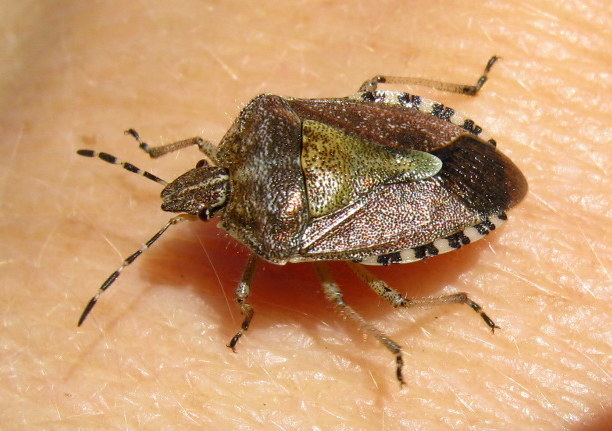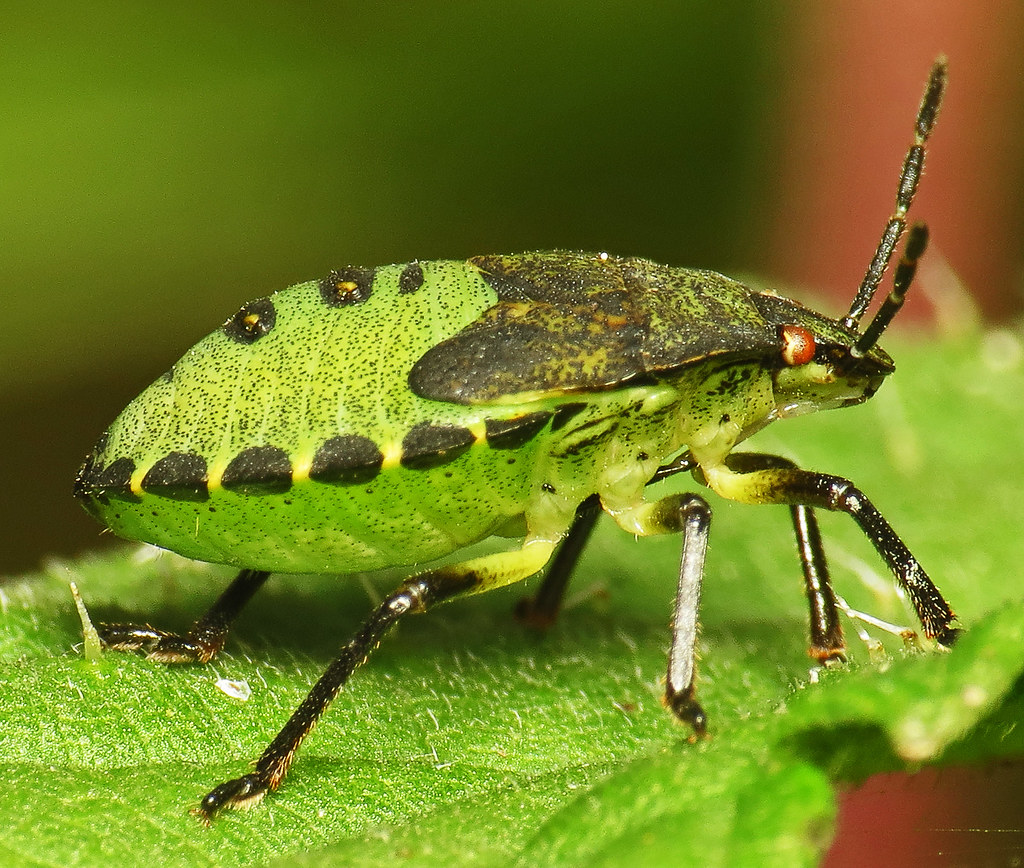This project is currently inactive
About
Ladybirds and shieldbugs are colourful and easily identifiable insects. Many species can be found in our gardens and there is the potential for rarer, more specialist species, to be found on the hills. Despite this, they are all very poorly recorded in the area. Over the year 2013, this project helped to put the ladybirds and shieldbugs of the Strettons on the map. Casual records are still welcome and add to our knowledge, enabling us to build a picture of the species present in the area, and some of the best sites for them.

Hairy Shieldbug (Photo: Caroline Uff)
A ladybird and shieldbug hunt can begin by simply turning over leaves and looking in crevices in bark or buildings. The project’s primary purpose is as a garden survey and it is hoped that it will appeal to children and adults alike. Participants are asked to keep records of what they see and to take photographs of what they find when in doubt. The survey design is mostly about people getting to know what’s in their gardens, but there are some loosely-defined targets directed at particular species.
- Two uncommon species, Heather Ladybird and Heather Shieldbug are likely to be present on Long Mynd, but so far there have been no records. Although a group visit to Long Mynd, with Wrekin Forest Volunteers, in June 2013 failed to find these elusive species, participants are encouraged to continue to keep a look out for them.
- Juniper Shieldbug used to be very rare and associated with Juniper woods on southern chalk habitats. It has recently started moving north-westwards and is now using a variety of non-native plants (e.g. Leyland cypress). It was first recorded in Shropshire last year (2012) near Telford and was found by a participant of this project in spring 2013 in All Stretton – a first for the area!
- Harlequin Ladybird (see image but note that this ladybird takes many forms). This foreign invader has raised concerns that it may displace our native ladybirds. There were relatively few records from the Strettons area prior to 2013. However, numbers peak in the autumn and, during the autumn of 2013, several records came in from participants. We are likely to start seeing them more frequently.

Harlequin Ladybird
2013 Training day
The main survey kicked off in early May 2013 with a training session at Coppice Leasowes led by Ian Cheeseborough. Training was provided to help with identification and to demonstrate a variety of search techniques. Sweep nets and field identification charts were made available. Despite the poor spring, several species, including Birch Shieldbug and Ten-spot Ladybird, were recorded on the training day.
A joint outing (with Wrekin Forest Volunteers) took place in June to look for heathland species on Long Mynd, but with poor results.
In late September, 2013, a field session in the Rectory Wood, Rectory Field and Townbrook Hollow area of Church Stretton was held and yielded many interesting species.
Report
A report of the 2013 survey results was circulated to participants, county and national recording schemes, and included in the annual report (available here).
Shieldbug records were also included in the recently published Shropshire Shieldbug Atlas.

GETTING INVOLVED
We welcome details of sightings of ladybirds and shieldbugs in the Strettons area for our records. Please email us at sacwg@shropscwgs.org.uk and include the name of the species seen, when and where it was seen and your name. Thank you.